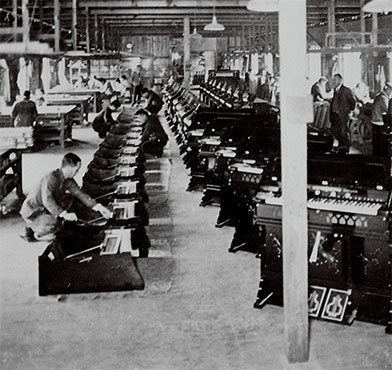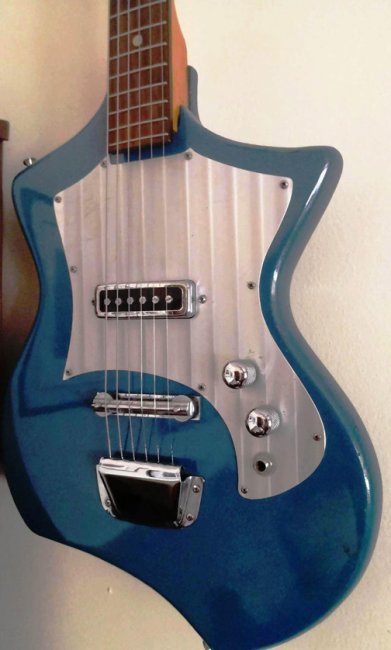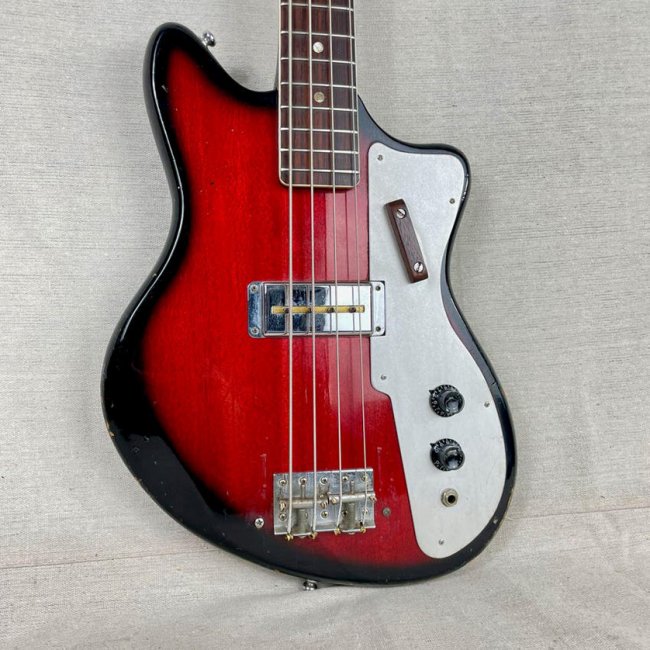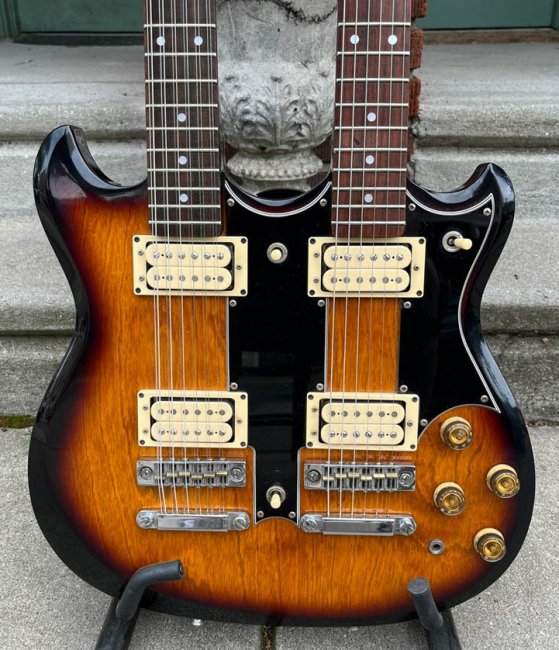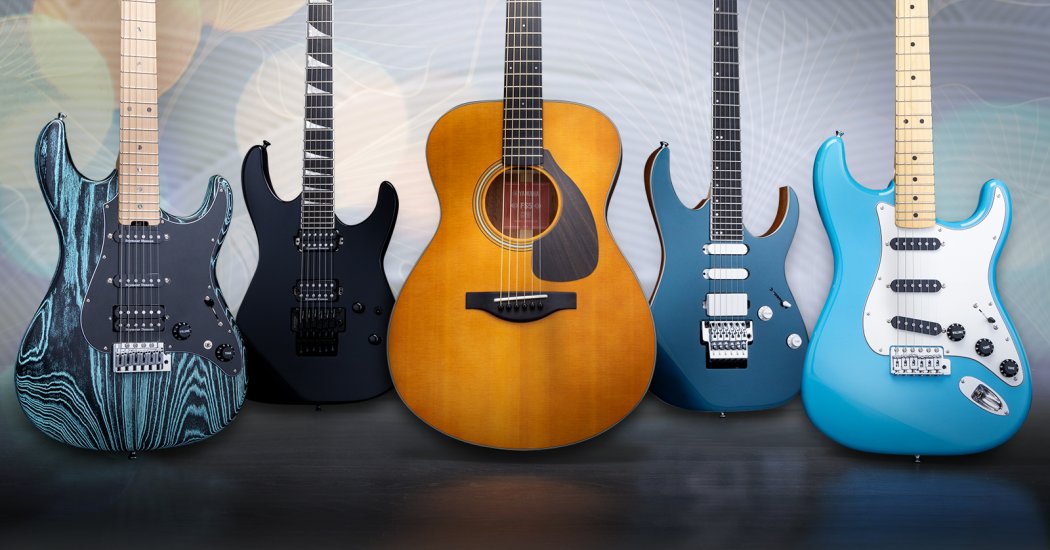
On June 29, 2023, Fender launched its first flagship retail store — four floors of Fender products finished with a Fender-themed café for you to quietly contemplate your next 6-string purchase.
Considering Fender’s been in business for 77 years, this was a momentous event in the company’s history. Surely, it opened near the historic Fender factory in Fullerton, California, right? Maybe adjacent to the modern Corona, California, factory? Leo Fender’s childhood home?
If you guessed any of these locations, then you’re only a couple of continents off — Fender’s flagship store opened in the bustling megalopolis of Tokyo, Japan. And as crazy as that might sound to American guitarists, no other country is so deserving of representing the 6-string’s historic legacy outside of America itself. The steel-string acoustic and electric guitar might have been born in the United States, but, as you’ll soon see, they’ve found a second home in the land of the rising sun.
- Japan’s Classical Upbringing
- A Pause Until the Postwar Years
- Boom & Bust
- The Lawsuit Legend
- A Farewell to Clones
- A Long-deserved Re-evaluation
Japan’s Classical Upbringing
Where to begin? While this story is primarily concerned with the history of Japanese guitar making through our uniquely American perspective, Japan’s interest in the 6-string stretches back to before the rise of mid-20th-century MIJ (Made In Japan) exports.
The year was 1853. The first solidbody guitars were nearly a century in the future. America’s oldest guitar manufacturer, C. F. Martin, had just celebrated its 20th birthday. California had entered statehood three years prior, and several thousand miles off San Diego’s sunny shores, Japan was sequestered in 200-plus years of isolation.
That is, until the United States arrived. Japan entered diplomatic and trade relations with the USA, and the country was introduced to a rush of Western ideas and goods. Naturally, this included the star of our story: the guitar, in its contemporary, gut-stringed, classical variation.
The classical guitar and many other Western instruments were quickly adopted, with several reports of Japanese musicians enthusiastically venturing across the ocean to train with European masters. However, few prominent Western musicians dared to travel to the East until 1929, when maestro Andrés Segovia — arguably the first world-class Western guitarist to perform in Japan — performed a string of concerts in Tokyo and Osaka. All at once, the classical guitar’s popularity skyrocketed, with bountiful demand and precious little supply.
It’s around this time that a few familiar faces begin to appear. A small bookstore in Nagoya, Japan, founded by Matsujiro Hoshino, started importing classical guitars from Salvador Ibáñez — yes, that Ibanez. Yamaha (at the time known as “Nippon Gakki,” or, in English, “Japanese Musical Instruments”) had already accrued nearly half a century’s worth of instrument-building expertise before jumping into the Spanish guitar game in the early 1940s.
During this era, Japan experienced a concurrent musical craze — Hawaiian music — fueled by early electrified lap steel guitars. The first Japanese electric guitar company, Guyatone, began constructing electric lap steel guitars and amps by 1933, only a few years after their inventions in America. Japan’s instrument industry was barreling toward the same 6-string revolution that was happening in America, with one rather significant hurdle in their path: World War II.
A Pause Until the Postwar Years
From roughly 1937 to Japan’s surrender in 1945, Japanese guitar building was at a standstill to make way for wartime manufacturing. This pause was because Japan was at war with the West and, more specifically, America. Western music was shunned for a time, only to re-emerge stronger than ever in the postwar years.
Let’s not get bogged down in global economics and geopolitics — that’s beyond the scope of this guitar history article! Nevertheless, America’s postwar occupation of Japan and the American effort to rebuild Japanese manufacturing are crucial here for two reasons: (1) America’s occupation of Japan meant American military bases, American soldiers, and American music, and that meant guitars, and (2) Japan’s postwar economic boom was tied to the country’s relationship with America, and guitar exports were a part of that package.
To give a sense of how unprecedented Japan’s economic recovery was after the Second World War, even historians refer to this period as the “Japanese Economic Miracle.” It’s no surprise that many of Japan’s most iconic OEM (Original Equipment Manufacturer) guitar factories — FujiGen Gakki, Matsumoku, Tokai Gakki, and others — began life in the postwar aftermath. The heavy American presence during the postwar occupation introduced all the new American musical trends, with the electric guitar standing at the forefront. Japan’s classical-guitar infatuation was left in the dust for brighter, electrified pastures.
Naturally, this created an immense demand for guitars — not only for the American GIs stationed there but also among the Japanese population, which was quickly catching on to American rock ‘n’ roll and pop music. Unfortunately for Japanese audiences, very few Western musicians bothered to tour Japan in the postwar years, making the eventual arrival of Western musicians in the 1960s even more potent.
But what about the guitars? Japanese instrument factories were gearing up for domestic production, but few instruments reached North American shores before the 1960s. Why? Frankly, there was little incentive to do so — America had plenty of budget-minded manufacturers to supply the student- and intermediate-level markets.
Additionally, Japanese electric guitar factories were still playing catch-up to the rapid progression of American electric guitar design. Ideas take time to traverse the Pacific, and it takes even more time for a fresh young guitar factory to put those ideas into production. Case in point: most Japanese guitar historians date the first solidbody Japanese guitar arriving well into the mid-1950s, which was years after the birth of the Telecaster, Stratocaster, and Les Paul in America.
Even if Japan had managed to catch up to the standards of American guitar craftsmanship, it’s somewhat unlikely that the USA’s professional-level guitarists would have adopted a Japanese-made model over a Gibson, Fender, or Martin equivalent. World War II was only a decade behind, and wounds were still tender.
Boom & Bust
The ’60s would be the first time American guitarists really got an authentic taste of Japanese electric guitars; as we’ll soon see, it was a veritable flood of instruments.
But first, let’s take stock of Japan’s early ’60s musical proclivities. The rock revolution led by the bands of the British Invasion was still a few years off, but surf music was immensely popular on both sides of the Pacific, driving increased demand for electric guitars and basses.
Why was Japan so fond of surf rock? For one, it was a fresh, new form of music that exclusively featured the electric guitars and basses that were steadily winning over the hearts of young Japanese musicians. And, more importantly, surf music is mainly instrumental — there’s no language barrier to muddy the musical waters.
The first big-name American act to tour Japan would be the Ventures in 1962, and the band’s impact on Japanese guitar culture cannot be overstated. Remember the classical-guitar stir caused by Segovia in 1929? Magnify it tenfold. The demand for electric guitars experienced exponential growth in Japan, further driving the need for more Japanese guitar factories.
A few years later, a certain group of Liverpool lads named the Beatles — along with several other British Invasion bands — took the world by storm, resulting in a once-in-a-century musical phenomenon. This phenomenon still broadly defines how we view the guitar: the 1960s American guitar boom.
Let’s be clear: the electric guitar was popular up to this point. It’s not as if it went from being a second-rate instrument to a worldwide sensation overnight. However, the rise of rock music in the mid-1960s was a truly lightning-in-a-bottle moment that established the guitar as an instrument and a cultural institution.
American manufacturers such as Fender, Gibson, Gretsch, and Martin couldn’t possibly keep up with the demand, nor were these professional-grade instruments within the budget for the average young American looking to take up the 6-string. Fortunately, America’s budget brands of the time, including Silvertone, Harmony, Danelectro, and Kay, picked up the slack. Unfortunately, their supply was quickly outstripped by legions of young guitar players.
So, America (and most of the Western world) suddenly experienced a dramatic need for more guitars without the capacity to produce them. At the same time, Japan’s rapidly rising manufacturing sector was cranking up electric guitar production. Sounds like a win-win situation for both sides — Japanese guitars from Teisco, Guyatone, and dozens of other offshoot brands began to flow into the country, while several American brands would outsource production (or simply rebrand Japanese models with their logos) to meet the guitar boom head on.
To put it simply, Japanese guitars from this era are some of the most eccentric creations in all of 6-string history. That doesn’t mean that they’re bad instruments, but it’s clear that replicating the Stratocaster or Les Paul wasn’t the goal! Many mid-1960s Japanese import guitars have switches and knobs well up into the double-digit range, boasting designs that pay little heed to the already well-established standards of American electric guitar design.
If you’re interested in going down the road of idiosyncratic 1960s Japanese guitars, then be warned: the brands and model numbers are often dizzyingly complex. One OEM, such as FujiGen, might make guitars under a dozen or more names, only for those brand names to be reused on a guitar from a completely different factory a few years later.

Fitchsprint, CC BY-SA 3.0, via Wikimedia Commons
The guitar boom peaked roughly around 1965. Demand remained high for the next few years, but the guitars experienced a rapid race to the bottom as budget manufacturers competitively cut costs and quality to secure the market. Consumers began to catch on, and while Japanese instruments are held in extremely high regard today, their reputation in America reached its lowest point. This reputation would take decades to shake off.
Guitar sales continued to tail off into more realistic numbers through the end of the mid-1960s, but so many overnight startup factories and even legacy American brands had overleveraged themselves to catch up to the mirage of never-ending demand. Silvertone, Harmony, Danelectro, Valco, Kay: the late 1960s and early 1970s are a graveyard of American budget guitar brands. The Japanese were not spared either; however, several top-end companies and factories would weather the storm, including FujiGen Gakki, Yamaha, and Guyatone.

Toshiyuki IMAI from Kyoto, Japan, CC BY-SA 2.0, via Wikimedia Commons
The Lawsuit Legend
It’s an almost universally accepted fact among guitar historians that the ’70s was a tough time for the guitar industry. Japanese factories reacted to the dismal landscape by taking a more cautious and conservative approach to guitar building; the wild and peculiar Japanese 6-strings of the 1960s largely disappeared for a time. Moreover, even a few big-name American brands began outsourcing production to Japanese factories, such as Gibson transforming Epiphone from an American-made brand fully on par with its Kalamazoo counterparts to a lower-priced brand aimed at the student market.
The quality of American guitar manufacturing continued on a downward streak, but, at the same time, the Japanese factories left over from the guitar boom’s bust only raised the quality of their instruments. Brands such as Greco, Hondo, Fernandes, Burny, Takamine, Suzuki, Ibanez, and Aria began creating heavily inspired or near clones of classic American guitars, some of which (but certainly not all) built to a higher standard than their contemporary American equivalents.
Most of those instruments were relegated to beginners or hobbyists (the reputation, if not the quality, of Japanese guitars was still rough at this point), but by the latter half of the ’70s, American companies began to take notice, and these imitations were regarded less as flattery and more as “cutting into our bottom line.”
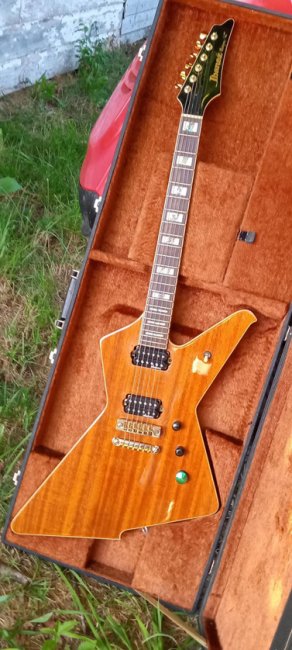
If you’ve ever wondered why Japanese guitars from the late 1970s and early 1980s are referred to as “lawsuit” guitars, then here’s why: While many parts of a guitar can be cloned with impunity, Gibson secured a trademark for its headstock shape in hopes of scaring off would-be clones. Many Ibanez copies from that time featured a nearly identical headstock to an actual Gibson instrument, prompting Gibson to take Ibanez to court — the two companies settled, and Ibanez modified its headstock. That’s it. Frankly, this was one of the period’s only full-scale “lawsuits” — it’s all a bit less exciting than the name implies!

Larry Jacobsen, CC BY 2.0, via Wikimedia Commons
Fender took a slightly different approach at the time. Japanese labor and production costs were significantly lower than their American equivalents, so the lower-priced 6-string copies made by Japanese companies like Tokai and Greco were far more alluring to consumers than a full-priced Fender.
Instead of a lawsuit, Fender established a joint venture in 1982 between several Japanese distributors and the FujiGen Gakki factory — the same factory that was making the clones that were eating into Fender’s sales. This would mark Fender’s first move outside of the United States.

Toshiyuki IMAI, CC BY-SA 2.0, via Wikimedia Commons
Fender shifted much of their lower-end production over into Japan to be exported back into the USA with the now-iconic “Made In Japan” printed on the back of the neck. Three years later, CBS (the corporation that bought out Fender in 1965) sold Fender, sans the historic Fullerton factory, to the current CEO Bill Schultz — a man who cut his teeth in the guitar industry working for Yamaha. While Schultz set to work building Fender’s Corona facility, most of Fender’s instrument production moved to Japan in 1985 — surely a validation that Japanese instruments were now on par with their American-made counterparts, right?
A Farewell to Clones
Not exactly. While it’s true that Fender did allow its Japanese-made instruments to proudly display the “Fender” badge, the company concurrently launched the Squier brand — a line of Japanese-made, budget-priced instruments. Truthfully, Japanese-made Squiers were built to very high standards, but the messaging was confusing. If your two favorite guitar companies (Gibson and Fender) produce their student lines in Japan (Epiphone and Squier) and their full-fledged models in America, then it’s not difficult to make the (misguided) assumption that American guitars must somehow be inherently superior to Japanese guitars.
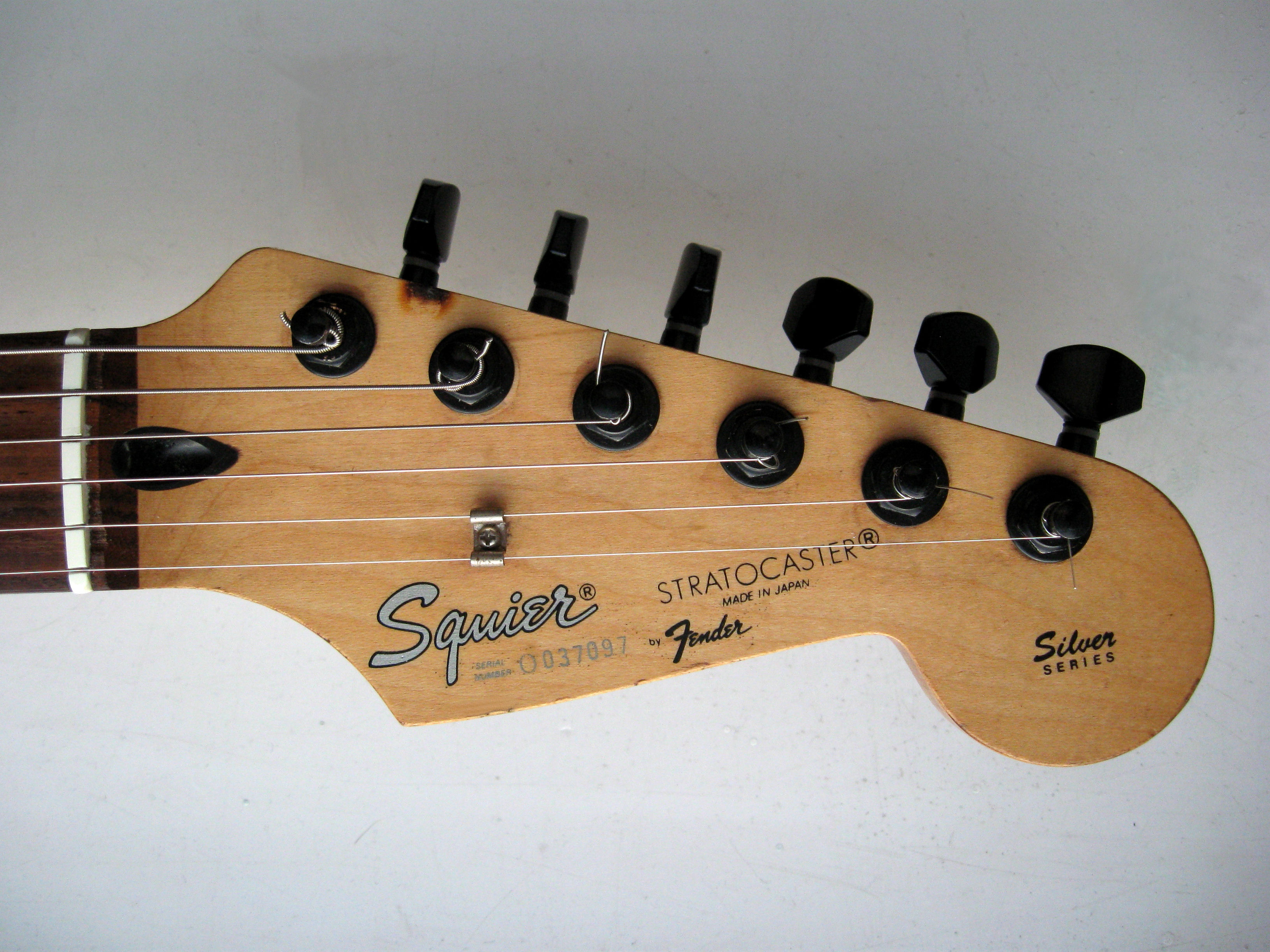
Andrew King, CC BY-SA 2.0, via Wikimedia Commons
What about the other Japanese makers that weren’t lucky enough to be bought out by Fender? The backlash against Japanese clones was a blessing in disguise of sorts, as these brands were all but forced to develop their own unique personalities in lieu of aping vintage American designs. As rock got heavier and heavier, many of these brands settled into their own little hard-rock, metal, and shred niches.
Ibanez arguably led the charge, with its angular “Iceman” model conceived as a uniquely Japanese guitar to stand out from the sea of American copies. The model was released in the mid-1970s and was then adopted quickly by Paul Stanley of Kiss. Few precious big-name American musicians were rocking Japanese guitar brands at the time, so Ibanez quickly approached Stanley to release a signature model in 1977.

Nashville69, CC BY-SA 4.0, via Wikimedia Commons
Ibanez rapidly started signing on artist endorsements, including jazzer George Benson and revered Grateful Dead guitarist Bob Weir. As Superstrats became the de-facto standard 6-string, Ibanez secured arguably its most iconic artist collaboration in 1987 with legendary shredder Steve Vai: the Ibanez JEM. Two years later, equally revered 6-string phenom Paul Gilbert signed on with Ibanez as well, cementing the brand’s status as one of the world’s premier shred-guitar builders to this day.
In similar shred-related news, Charvel and Jackson were sold to the Japanese firm IMC in 1989, which then moved production exclusively to Japan with guitars exported to America. Jackson and Charvel pay tribute to these beloved models with the current Jackson MJ and Charvel MJ series, which comprise seriously high-end instruments often priced right up there with each respective brand’s USA-made offerings.
Around the same time, George Lynch of Dokken discovered ESP guitars while snooping around a Tokyo guitar store. He formally endorsed the brand in 1986, a partnership that’s lasted until today. With a bit of help from Kirk Hammett, James Hetfield, and legions of other hard-edged guitarists, ESP (and ESP LTD series of) instruments now reign supreme among the most dominant guitars in the world of metal and hard rock.
What about the acoustic guitar front? As it turns out, Japan’s break from the classical guitar was short-lived, and few makers better exemplify Japan’s climb back into acoustic prominence (of both the steel- and nylon-string varieties) better than Alvarez.
Back in the 1950s, in the small town of Kani, a young man named Kazuo Yairi took up the family trade of crafting classical guitars, training under the tutelage of his father before becoming a master luthier in his own right. Unfortunately for Yairi, his rise as a classical guitar luthier coincided with the classical guitar’s (temporary) demise. True, the American guitar boom also demanded acoustic guitars, but acoustic guitars of a different sort.
Luckily, good news was right around the corner. Right in the midst of the guitar boom, an American named Gene Kornblum met with Yairi and convinced him to begin building steel-string guitars under the name “Alvarez” for his instrument distribution company St. Louis Music. Yairi’s small workshop had never built steel-string guitars before, but that didn’t deter them one bit — under the name Alvarez, Yairi began to build both classical and steel-string models, and they’re widely considered to be some of the finest acoustics of the Japanese import era.
Sixty years on, Alvarez is still going strong. The Japanese-made Alvarez Yairi lineup pays tribute to Yairi with handmade instruments that come from the very same Kani workshop that the Yairi family started more than 80 years ago. Even Alvarez’s more affordable offshore options display the world-class craftsmanship and acoustic innovation that have made their Japanese counterparts so famous, including a modified version of Yairi’s distinctive bi-level bridge system.
Finally, nearly a decade after Japanese manufacturing aided Fender’s return from the brink, another legacy American brand was resurrected in the East: Gretsch. The guitar boom hit Gretsch particularly hard, as the demand for “those guitars George Harrison plays” simply dwarfed Gretsch’s capacity to build them. Production rose, quality fell, Baldwin bought out Gretsch, and the brand was all but dead by the early 1980s.
Fortunately, Gretsch was eventually taken back from Baldwin by the Gretsch family, who moved all Gretsch production to Japan in 1989. Since then, the Gretsch guitars made by the Terada, FujiGen, and Dyna Gakki factories have been regarded by even the staunchest of vintage advocates as some of the finest guitars Gretsch has ever built.
A Long-deserved Re-evaluation
By the time the ’90s rolled in, Japanese guitar exports had covered everything from wholly Japanese 6-string creations to near-perfect replications of golden-age American instruments. But by and large, they were viewed as workhorse guitars, with little of the premium prestige they hold today.
Why? If you’ve played an old MIJ Fender from the 1980s next to a modern-day Japanese Fender, then you know there’s not much of a difference between them. From MIJ to the later CIJ (Crafted In Japan) models and from FujiGen to Dyna Gakki, Japanese Fenders are consistently top-notch. Swap in almost any other high-end Japanese brand, and that same example likely holds true. Sure, pickups have gotten slightly better for some brands, and higher-quality electrical components are now the norm, but even with those factors considered, that doesn’t quite explain the massive re-evaluation of Japanese guitars and basses from “solid” to “superlative.”
Remember the death of the American budget brand in the late 1960s and early 1970s? It was Japan’s turn. Japan’s rise to the upper ranks of the world’s economies meant higher wages for workers, which meant more expensive guitars. Gibson shuttered almost all of Epiphone’s Japanese production in 1987 when the Matsumoku factory closed. Around that same time, Fender started to explore new locations for the Squier line in countries like Korea and China.
That might sound like bad news for the Japanese guitar industry, but the truth is that MIJ brands followed the same pattern set by their Western predecessors. High-end lines from Ibanez, ESP, and Yamaha would still be built domestically (in Japan), but more affordable instruments were outsourced, sometimes under a sub-brand like ESP’s LTD series.
Slowly but surely, the ultra-low-cost MIJ tradition faded away and was replaced with a Japanese guitar industry that focused almost exclusively on mid-to-high-priced instruments — hence Japan’s modern reputation for premium quality guitars, which, in turn, spurned a retroactive reassessment of the country’s entire 6-string output. Today, a Japanese-made Strat will run you only marginally less than an American-made one. Japanese-made Ibanez, ESP, Caparison Guitars, Jackson, Charvel, Gretsch, and even occasional Japanese-made runs from Epiphone rest firmly in the “professional-grade” guitar camp.
Interestingly enough, Korean and Chinese guitars are gearing up to repeat the cycle once more as guitar manufacturing continues to island hop in the Pacific in search of lower production costs. The current crop of top-notch MIK and MIC guitars from brands like Reverend, Epiphone, Squier, Gretsch, and countless others are forcing a similar re-evaluation that will (hopefully) lead guitarists to a hard-earned lesson: a guitar should be judged on its merit as an instrument, not on its country of origin!
Japan’s 6-string Journey Continues
After nearly a century of guitar making, dozens of OEM factories, and enough brands to confuse even the most dedicated MIJ historians, Japanese guitars of all stripes now rest rightfully among the world’s most elite 6-string creations. Whether you’re after a true-blue MIJ guitar or one of the many modern offshoots of classic Japanese guitar brands, be sure to reach out to your Sweetwater Sales Engineer at (800) 222-4700 for expert-level advice on picking out your next 6-string!


